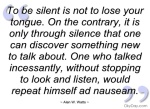People talking without speaking,
People hearing without listening,
Paul Simon
——————–
Let’s talk about the value of silence. Intentional silence. You, alone with your thoughts.
But, now, let’s consider the value of silence – you alone with your thoughts, – but in a room with other people also alone with their thoughts.
Now, in that silence, let’s consider “guiding” those thoughts in the silence.
First, you focus – in silence. Then, you begin speaking…
This is a new trend. At least, a small trend. It’s a practice at the top levels at Amazon. And, it’s a new idea, an idea that has already proven to be an improvement on the “old way” – for brainstorming sessions
I’m a big fan of this trend. Big fan! I think it is brilliant. And, I’ve tried it out, and it makes for better conversation between the people in the room. Further down, I’ll describe what I am doing with this idea.
 Here’s the Amazon idea. I wrote about it in this blog post: Start your Meetings with Silent Reading of Shared Documents; Paper Documents! – A Brilliant Practice from Jeff Bezos. What they do at Amazon is that for each meeting of his “S Team,” the top team, a different person writes a six page narrative, to be read in silence by the members of the group, together. They do not get the document before the meeting. It is handed out, and the people read it, mark it up, come up with their own questions and reflections, and then, after about 30 minutes of silent reading and reflection, they begin their discussion.
Here’s the Amazon idea. I wrote about it in this blog post: Start your Meetings with Silent Reading of Shared Documents; Paper Documents! – A Brilliant Practice from Jeff Bezos. What they do at Amazon is that for each meeting of his “S Team,” the top team, a different person writes a six page narrative, to be read in silence by the members of the group, together. They do not get the document before the meeting. It is handed out, and the people read it, mark it up, come up with their own questions and reflections, and then, after about 30 minutes of silent reading and reflection, they begin their discussion.
Now the new findings for brainstorming. I read about it in this article: Turns Out The Way Your Team Is Brainstorming Is Probably All Wrong by Vivian Giang. Here’s an excerpt from the article:
All of the participants sat together in a room separated by dividers to refrain them from making visible contact with one another.
Researchers further tested the impact cognitive fixation has on others’ ideas by altering the number of ideas that different group participants were exposed to. They found that the more notifications a participant saw, the less creative, diverse ideas they offered.
In the first five minutes of the session, individual participants generated 44% more ideas than the group participants, but this number decreased with time, which concludes that a group session after an individual session might be the optimal brainstorming technique.
So, for better brainstorming, have individuals write their ideas (obviously, prompted by a common question) in silence, and after some silence, begin the verbal discussion.
Here’s what I think. In this SmartPhone, always checking e-mail, minds going a thousand ways at once world, we need to help a group “focus on the same thing” in a meeting or a group discussion of any kind. One way to do this is to focus on the same thing in silence. Whether it is a document for each to read, or a question to respond to individually on paper, it focuses the members of the group on the same thing. The silence is a great focuser! Then, that silent-facilitated shared focus enables much deeper and more productive discussions.
{An aside: one business consultant purchases our book synopsis from our 15minutebusinessbooks site. He plays our audio presentations to a group (usually, an executive team), and provides physical copies of our handouts for each participant to follow along. This takes about 17 minutes. Then, they discuss the ideas from the book. So, the room is not silent, but the participants are silent, listening together. Then, he launches into the “business” session of their discussion. He finds that the book presentation informs the conversation that follows, and has found this approach to be very effective}.
 Here’s what I have been doing. I’ve now done this a few times, and am pretty hooked. Here’s the description of a recent session in which I led a group through my synopsis of Words that Work by Frank Luntz. To start the session, I handed out physical copies of this blog post: Communicate: Just Communicate – 8 Communication Musts for the Modern Organization. I gave them 5 minutes to read it in silence, and then, after their silent reading, asked them to turn to the person next to them and discuss which of the 8 “Communication Musts” their group did well, and which they needed to work on. After a couple of minutes of discussion, I then presented my synopsis of the book. It was a great focusing tool.
Here’s what I have been doing. I’ve now done this a few times, and am pretty hooked. Here’s the description of a recent session in which I led a group through my synopsis of Words that Work by Frank Luntz. To start the session, I handed out physical copies of this blog post: Communicate: Just Communicate – 8 Communication Musts for the Modern Organization. I gave them 5 minutes to read it in silence, and then, after their silent reading, asked them to turn to the person next to them and discuss which of the 8 “Communication Musts” their group did well, and which they needed to work on. After a couple of minutes of discussion, I then presented my synopsis of the book. It was a great focusing tool.
I think you should explore the creative use of “silence – together” on your team. You might find it to be very much worth the effort. That’s certainly what I’ve found.
